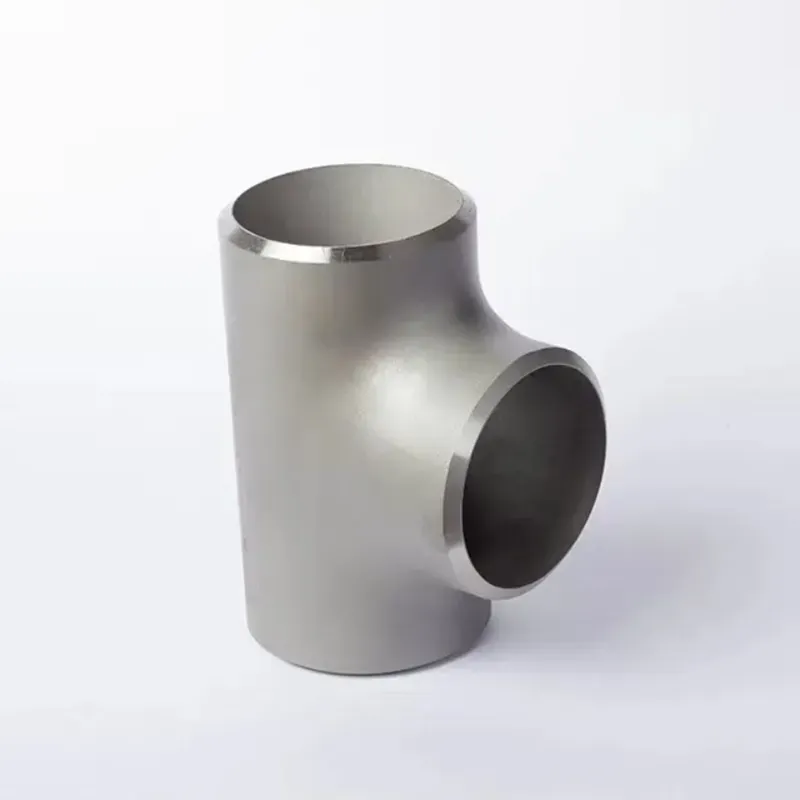-
Cangzhou Yulong Steel Co., Ltd.
-
Phone:
+86 13303177267 -
Email:
admin@ylsteelfittings.com
- English
- Arabic
- Italian
- Spanish
- Portuguese
- German
- kazakh
- Persian
- Greek
- French
- Russian
- Polish
- Thai
- Indonesian
- Vietnamese
- Zulu
- Korean
- Uzbek
- Hindi
- Serbian
- Malay
- Ukrainian
- Gujarati
- Haitian Creole
- hausa
- hawaiian
- Hebrew
- Miao
- Hungarian
- Icelandic
- igbo
- irish
- Japanese
- Javanese
- Kannada
- Khmer
- Rwandese
- Afrikaans
- Albanian
- Amharic
- Armenian
- Azerbaijani
- Basque
- Belarusian
- Bengali
- Bosnian
- Bulgarian
- Catalan
- Cebuano
- China
- China (Taiwan)
- Corsican
- Croatian
- Czech
- Danish
- Esperanto
- Estonian
- Finnish
- Frisian
- Galician
- Georgian
- Kurdish
- Kyrgyz
- Lao
- Latin
- Latvian
- Lithuanian
- Luxembourgish
- Macedonian
- Malgashi
- Malayalam
- Maltese
- Maori
- Marathi
- Mongolian
- Myanmar
- Nepali
- Norwegian
- Norwegian
- Occitan
- Pashto
- Dutch
- Punjabi
- Romanian
- Samoan
- Scottish Gaelic
- Sesotho
- Shona
- Sindhi
- Sinhala
- Slovak
- Slovenian
- Somali
- Sundanese
- Swahili
- Swedish
- Tagalog
- Tajik
- Tamil
- Tatar
- Telugu
- Turkish
- Turkmen
- Urdu
- Uighur
- Welsh
- Bantu
- Yiddish
- Yoruba

Dec . 20, 2024 09:29 Back to list
steel pipe bend
Understanding Steel Pipe Bends Applications, Types, and Benefits
Steel pipes are integral components across a multitude of industries, including oil and gas, construction, and manufacturing. Among various configurations, bends are crucial in directing flows, managing space, and maintaining the integrity of piping systems. The steel pipe bend, often essential in piping systems, facilitates seamless transitions between straight sections of pipe, thereby optimizing functionality and efficiency.
Applications of Steel Pipe Bends
Steel pipe bends are employed in numerous applications. In the oil and gas industry, for instance, they are used to transport hydrocarbons through various terrains and facilities. The bends allow for the directional changes necessary to navigate through complex infrastructures or natural landscapes. Similarly, in the water treatment and distribution sector, steel pipe bends play a vital role in guiding water flow through treatment plants and into municipal systems.
Another significant application is found in construction projects where steel pipe bends are utilized for HVAC (heating, ventilation, and air conditioning) systems. These bends help in directing airflows throughout a building, ensuring efficient temperature regulation. Furthermore, in power generation facilities, steel pipe bends are crucial in carrying steam and gases through turbines, contributing to the overall efficiency and efficacy of energy production.
Types of Steel Pipe Bends
Steel pipe bends come in various types and configurations, each designed for specific requirements. The most common types include
1. Elbow Bends These are the most frequently used bends and come in various angles, typically 45 or 90 degrees. They are essential for redirecting the flow of liquids and gases within a piping system.
2. Swept Bends Unlike standard elbow bends, swept bends have a longer radius, providing a gentler change in direction. This design minimizes turbulence and pressure loss, making them suitable for high-flow applications.
3. Reducing Bends These bends are designed to connect pipes of different diameters. They are essential in situations where the volume of flow must be adjusted, such as in various stages of processing within chemical plants.
4. Segmented Bends Composed of multiple straight segments, segmented bends are used in scenarios where standard bends cannot fit due to space constraints. They offer flexibility in complex piping layouts.
steel pipe bend

Each type of bend serves its unique purpose, emphasizing the importance of selecting the appropriate configuration for specific applications.
Benefits of Steel Pipe Bends
The use of steel pipe bends offers numerous benefits, contributing to the efficiency and reliability of piping systems. Some notable advantages include
1. Space Optimization Bends allow pipes to navigate around obstacles, maximizing the use of available space. This is particularly advantageous in confined areas where straight pipes cannot be utilized effectively.
2. Improved Flow Dynamics Properly designed bends reduce turbulence and pressure loss, leading to more efficient flow dynamics. This efficiency translates into lower energy costs and better system performance.
3. Durability and Strength Steel is renowned for its strength and durability. Steel pipe bends maintain the robust characteristics of steel piping, ensuring longevity and reliability even in harsh environments.
4. Versatility Steel pipe bends can be manufactured in various sizes, shapes, and configurations to meet the specific needs of diverse applications. This versatility makes them suitable for multiple industries and uses.
5. Facilitation of Maintenance By allowing flexible routing of pipes, steel bends can make it easier to access certain areas for maintenance or modification without the need for extensive reconfiguration of the whole piping system.
Conclusion
Steel pipe bends are a vital component in modern piping systems, impacting numerous industries by enhancing functionality and efficiency. Their design versatility and ability to facilitate smooth transitions in piping infrastructure make them indispensable for transporting fluids and gases. Understanding the different types, applications, and benefits of steel pipe bends enables engineers and project managers to make informed decisions, ensuring the reliability and efficiency of their systems. As industries continue to evolve and demand higher performance standards, the role of steel pipe bends will remain pivotal in achieving those goals, ensuring safe and effective transport of resources.
Latest news
-
ANSI 150P SS304 SO FLANGE
NewsFeb.14,2025
-
ASTM A333GR6 STEEL PIPE
NewsJan.20,2025
-
ANSI B16.5 WELDING NECK FLANGE
NewsJan.15,2026
-
ANSI B16.5 SLIP-ON FLANGE
NewsApr.19,2024
-
SABS 1123 FLANGE
NewsJan.15,2025
-
DIN86044 PLATE FLANGE
NewsApr.19,2024
-
DIN2527 BLIND FLANGE
NewsApr.12,2024
-
JIS B2311 Butt-Welding Fittings LR/SR 45°/90° /180°Seamless/Weld
NewsApr.23,2024











